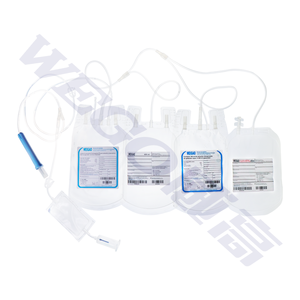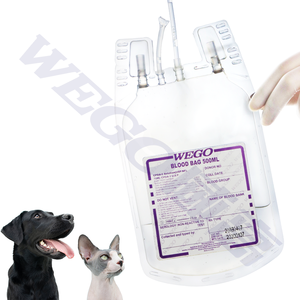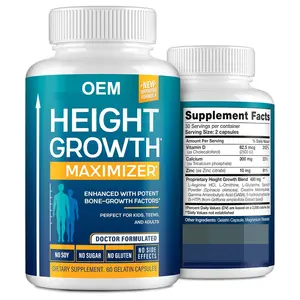Phổ biến trong ngành của bạn






Tái Sử Dụng Ma Cà Rồng IV Túi Máu/Pvc Vô Trùng Uống Túi
0,40 US$ - 0,68 US$
Đơn hàng tối thiểu: 50 Cái







Trummed thoát nước hai mảnh stoma túi hai mảnh hệ thống colostomy Túi
0,50 US$ - 1,20 US$
Đơn hàng tối thiểu: 5000 Cái






Tự động Túi máu sản xuất dòng lưu trữ máu Bộ sưu tập y tế PVC túi máu Máy làm
150.000,00 US$
Đơn hàng tối thiểu: 1 Cái






Đầy đủ tự động tần số cao hàn túi nhựa máy làm túi máu sản xuất trong chìa khóa trao tay
150.000,00 US$
Đơn hàng tối thiểu: 1 Cái






Túi Colostomy Bán Chạy Nhất Đồ Dùng Túi Không Dệt Dùng Một Lần 0 Ngăn
0,52 US$ - 0,58 US$
Đơn hàng tối thiểu: 100 Cái







Túi Truyền Máu CPD CPDA Đơn Gấp Ba Lần 250Ml 350Ml 450Ml 500Ml
0,822 US$ - 12,33 US$
Đơn hàng tối thiểu: 10000 Cái












Túi Máu Bộ Sưu Tập Cpda-1 450Ml Đơn Dùng Một Lần Chất Lượng Cao
0,50 US$ - 1,00 US$
Đơn hàng tối thiểu: 2000 Cái






Pet Y Tế Bệnh Viện Sử Dụng Y Tế Dùng Một Lần Duy Nhất Đôi Ba Tăng Gấp Bốn Bộ Sưu Tập Máu Túi 450Ml 500Ml
0,52 US$ - 3,00 US$
Đơn hàng tối thiểu: 2000 Cái






WEGO Bộ Sưu Tập Ba Lần Đơn Y Tế Rỗng Cho Các Nhà Sản Xuất Thú Y Túi Máu Truyền Máu Cho Động Vật
0,80 US$ - 3,00 US$
Đơn hàng tối thiểu: 2000 Cái












WEGO Túi Máu Huyết Tương Y Tế Dùng Một Lần Túi Truyền Máu Túi Máu Thú Cưng Có Chứng Nhận CE
0,80 US$ - 3,00 US$
Đơn hàng tối thiểu: 2000 Cái
Các tìm kiếm liên quan:
túi máu lớntúi máu đơntúi máu sagmnhà sản xuất túi máu nhà sản xuấtnhà máy sản xuất túi máudùng một lần túi máu nhà sản xuấtba túi máu dùng một lầntúi thu thập máu ba lần 350ml350ml túi máu dùng một lầnthiết kế túi máutúi máu dùng một lầntúi máu dùng một lần450ml ba lần truyền máu túitúi máutúi đựng máu






Túi Đựng Máu Động Vật Y Tế Vet Túi Máu Truyền Máu Thú Y 1 Lít 450Ml 1000Ml
0,80 US$ - 3,00 US$
Đơn hàng tối thiểu: 2000 Cái






Túi Lấy Máu Y Tế Rỗng Túi Chuyển Máu Với CPDA-1 Chống Đông Máu
0,35 US$ - 1,45 US$
Đơn hàng tối thiểu: 1000 Cái






Túi Nước Ép Tập Trung Hai Nòng, Túi Máu, Nhật Ký Ma Cà Rồng, Túi Nước PVC Halloween
Sẵn sàng vận chuyển
0,25 US$ - 0,56 US$
Đơn hàng tối thiểu: 725 Cái
Vận chuyển mỗi chiếc: 0,07 US$






Vampire Diaries Halloween Double-Barreled Nước Ép Cô Đặc Túi Điện Bộ Sưu Tập Túi Máu
0,01 US$ - 0,10 US$
Đơn hàng tối thiểu: 5000 Cái






Chất Lượng Cao Tùy Chỉnh Có Thể Tái Chế 150Ml 350Ml Halloween Đồ Uống Nước Ép Trái Cây Lỏng Máu Đơn Túi
0,04 US$ - 0,06 US$
Đơn hàng tối thiểu: 5000 Cái
Vận chuyển mỗi chiếc: 92,86 US$






WEGO Túi Lấy Máu Y Tế Rỗng Túi Máu Vô Trùng Đơn Động Vật CPDA-1 Cho Thú Cưng
0,80 US$ - 3,00 US$
Đơn hàng tối thiểu: 2000 Cái






Nhãn tùy chỉnh reusable150ml 350ml Halloween truyền ống rỗng uống duy nhất máu IV túi bao bì

0,04 US$ - 0,08 US$
Đơn hàng tối thiểu: 5000 Cái
Vận chuyển mỗi chiếc: 92,83 US$






WEGO Túi Máu Nhựa Đơn Giá Xuất Xưởng Chất Lượng Cao Túi Máu Y Tế Dùng Một Lần
0,80 US$ - 3,00 US$
Đơn hàng tối thiểu: 2000 Cái






WEGO Bán Cpda-1 Rỗng Y Tế Giá Xuất Xưởng Túi Máu 3 Ngăn Vô Trùng PVC
0,80 US$ - 3,00 US$
Đơn hàng tối thiểu: 2000 Cái






Túi Máu Truyền Máu Thú Y LHL105 Túi Máu Cho Động Vật Túi Máu PVC Y Tế Cho Động Vật
0,80 US$ - 3,00 US$
Đơn hàng tối thiểu: 2000 Cái






Y tế chất lượng cao máu Bộ sưu tập túi CPDA-1/cpd + sagm 450ml đơn/đôi/Ba/bốn phần ăn
0,80 US$ - 3,00 US$
Đơn hàng tối thiểu: 2000 Cái






WEGO Túi Máu 450Ml Single Cpda 1 Túi Máu Bán Hàng Y Tế Có Chứng Nhận CE
0,80 US$ - 3,00 US$
Đơn hàng tối thiểu: 2000 Cái






Bác Sĩ Thú Y Y Tế Động Vật Máu Bộ Sưu Tập Túi 200Ml 250Ml 300Ml 350Ml 400Ml 450Ml 500Ml Thú Y Truyền Túi Máu
0,80 US$ - 3,00 US$
Đơn hàng tối thiểu: 2000 Cái






WEGO Túi Lấy Máu Thú Y Túi Đựng Máu Dùng Một Lần Bằng Nhựa Y Tế Động Vật Vô Trùng Có Chứng Nhận CE
0,80 US$ - 3,00 US$
Đơn hàng tối thiểu: 2000 Cái






WEGO Túi Máu Thú Y Túi Máu Dùng Một Lần Bằng Nhựa Y Tế Vô Trùng Có Chứng Nhận CE
0,80 US$ - 3,00 US$
Đơn hàng tối thiểu: 2000 Cái






WEGO Túi Đựng Máu Rỗng Bằng Nhựa Dùng Một Lần Được CE Phê Duyệt Các Nhà Sản Xuất Túi Đựng Máu Cho Động Vật
0,80 US$ - 3,00 US$
Đơn hàng tối thiểu: 2000 Cái






Túi Lấy Máu Dùng Một Lần CPDA-1/CPD + SAGM 450Ml Đơn/Đôi/Ba/Bốn Lần
0,80 US$ - 3,00 US$
Đơn hàng tối thiểu: 2000 Cái






Túi Thu Thập Máu Y Tế Hình Động Vật Gấp Ba Lần Để Bán
0,80 US$ - 3,00 US$
Đơn hàng tối thiểu: 2000 Cái






Vật Tư Y Tế Thú Y Túi Máu Vô Trùng Dùng Một Lần Để Lấy Máu Đơn 450Ml
0,80 US$ - 3,00 US$
Đơn hàng tối thiểu: 2000 Cái












Túi Lấy Máu Thú Y Chất Lượng Cao Bộ Sưu Tập Máu Mèo, Túi Máu Túi Sưu Tập Dây Có Thể Tùy Chỉnh
0,80 US$ - 3,00 US$
Đơn hàng tối thiểu: 2000 Cái






Túi Đựng Máu Dùng Trong Thú Y Được CE Phê Duyệt Giá Túi Đựng Máu Rỗng Động Vật Cpda Cpd 450Ml Túi Niêm Phong Ống Đơn
0,80 US$ - 3,00 US$
Đơn hàng tối thiểu: 2000 Cái






WEGO Túi Máu Y Tế Dùng Một Lần Cho Thú Cưng Dùng Trong Bệnh Viện Thú Y Cpd 450Ml
0,80 US$ - 3,00 US$
Đơn hàng tối thiểu: 2000 Cái






Túi Thu Thập Máu Y Tế 4 Lần Singe Được Chứng Nhận Ce Túi Máu Cpd 450Ml
0,80 US$ - 3,00 US$
Đơn hàng tối thiểu: 2000 Cái
Các danh mục hàng đầu
Giới thiệu về túi máu đôi cpda
Ngày nay, túi máu đôi cpda không còn là điều mới mẻ đối với những người bình thường và không còn bị coi là điều cấm kỵ khi sử dụng. Nếu bạn đang tìm kiếm niềm vui áp chót đó, bạn phải kiểm tra sự bao la. Bộ sưu tập túi máu đôi cpda tại Alibaba.com. Những gợi cảm và cong. túi máu đôi cpda đáng giá từng xu và chắc chắn làm cho đêm đó trở nên đặc biệt đối với bạn. Những con búp bê này có ngoại hình giống như thật, bắt đầu từ tóc đến ngón chân theo mọi nghĩa.
Cho dù bạn là một người cô đơn đang tìm kiếm một người bạn đời như cuộc sống hay một cặp vợ chồng muốn thêm gia vị cho cuộc sống của họ, bạn đều có thể sử dụng chúng . túi máu đôi cpda để đốt cháy ngọn lửa đó. Những ngoạn mục. túi máu đôi cpda có thể tùy chỉnh theo mong đợi của bạn. Những điều tuyệt vời. túi máu đôi cpda có sẵn ở cả phiên bản dành cho nam và nữ và được làm từ silicone cấp y tế để sử dụng an toàn. Hãy sở hữu ngay bây giờ và tận hưởng một đêm đam mê và cháy bỏng.
Alibaba.com cung cấp những điều tuyệt vời này. túi máu đôi cpda ở mọi hình dạng cơ thể, kích thước và sắc tộc. Dù yêu cầu của bạn đối với. túi máu đôi cpda, bạn có thể tải tất cả chúng trên trang web. Những cái này. túi máu đôi cpda được tạo hình bởi những người thợ thủ công giỏi nhất và mọi chi tiết phức tạp đều được kiểm tra kỹ lưỡng. Những con búp bê này có mắt, tóc, móng tay và tất cả các bộ phận cơ thể khác tương tự như người thật.
Alibaba.com cung cấp nhiều loại. túi máu đôi cpda có thể giúp bạn mua các sản phẩm phù hợp với ngân sách và các yêu cầu khác của bạn. Các sản phẩm này an toàn để sử dụng, được chứng nhận và thân thiện với môi trường trong tự nhiên. Đơn đặt hàng OEM có sẵn trên các sản phẩm này.
Cho dù bạn là một người cô đơn đang tìm kiếm một người bạn đời như cuộc sống hay một cặp vợ chồng muốn thêm gia vị cho cuộc sống của họ, bạn đều có thể sử dụng chúng . túi máu đôi cpda để đốt cháy ngọn lửa đó. Những ngoạn mục. túi máu đôi cpda có thể tùy chỉnh theo mong đợi của bạn. Những điều tuyệt vời. túi máu đôi cpda có sẵn ở cả phiên bản dành cho nam và nữ và được làm từ silicone cấp y tế để sử dụng an toàn. Hãy sở hữu ngay bây giờ và tận hưởng một đêm đam mê và cháy bỏng.
Alibaba.com cung cấp những điều tuyệt vời này. túi máu đôi cpda ở mọi hình dạng cơ thể, kích thước và sắc tộc. Dù yêu cầu của bạn đối với. túi máu đôi cpda, bạn có thể tải tất cả chúng trên trang web. Những cái này. túi máu đôi cpda được tạo hình bởi những người thợ thủ công giỏi nhất và mọi chi tiết phức tạp đều được kiểm tra kỹ lưỡng. Những con búp bê này có mắt, tóc, móng tay và tất cả các bộ phận cơ thể khác tương tự như người thật.
Alibaba.com cung cấp nhiều loại. túi máu đôi cpda có thể giúp bạn mua các sản phẩm phù hợp với ngân sách và các yêu cầu khác của bạn. Các sản phẩm này an toàn để sử dụng, được chứng nhận và thân thiện với môi trường trong tự nhiên. Đơn đặt hàng OEM có sẵn trên các sản phẩm này.











